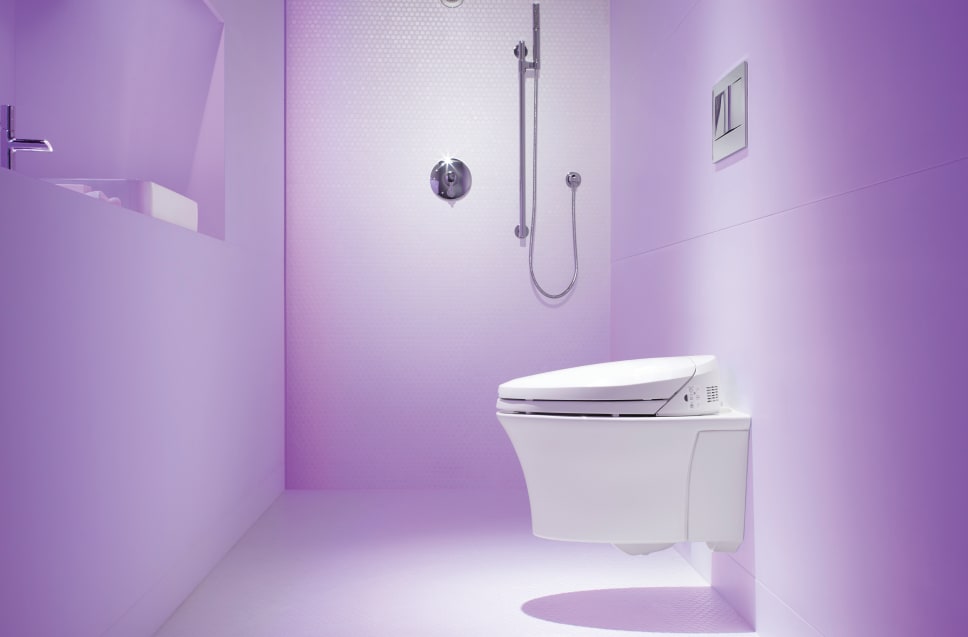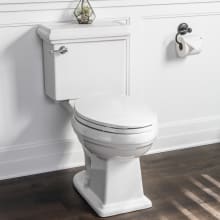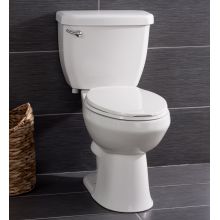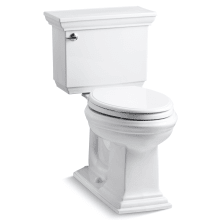The Low Down on Low-Flow Toilets
Here's how these environmentally conscious models are different from their predecessors.

What Is a Low-Flow Toilet?
If you are creating a new bathroom, you’ve no doubt heard a lot about “low-flow” toilets, and chances are that some of it was negative. Maybe you are looking for some insight into this controversy, or perhaps you are environmentally conscious and you want to understand how to find a more efficient toilet. Either way, you’ll need to understand what makes low-flow toilet options different so you can find a powerful waste disposal option that doesn’t use an excessive amount of water.
Low-Flow Toilet History
In 1992, the United States passed a water conservation law that mandated new toilets only use 1.6 gallons per flush. Previous models had used between 3.5 and 7 gallons, so this reduction stood to significantly reduce household water waste across the country. By 1994, all new model toilets on the market had to comply with the law. The major toilet manufacturers did comply, but without a reassessment of their products.
The result of this oversight was a lower-performing toilet, and a consumer revolt against the low-flow toilet began almost immediately. Consumers tried to acquire older model toilets and hoard them, creating a massive resale market. Some critics of the new toilets pointed out that if they were lower-performing, the additional flushes needed to properly dispose of waste negated any water savings. Manufacturers heard their critiques and quickly changed their designs to make efficient toilets more powerful.
How Does a Low-Flow Toilet Work?
The first design changes that were made to low-flow toilets allowed them to use the flush water more efficiently. This was accomplished through a few means:
- Increased trap size and decreased complexity
- Decreased reliance on the siphon mechanism for flushing
- Mechanical innovations specific to individual models
To understand how these innovations impacted the design of the modern toilet, one has to first understand how toilets operate. Toilets in the nineteenth and twentieth centuries made use of the force of gravity as well as water being siphoned to pull waste through the trap and into the sewage pipes where it could be carried away. That’s why the old models used so much water. When the low-flow mandate was enacted, the old design stopped working well because there was simply not enough water in the bowl to create a powerful siphon action.
Increased Trap Size
Increasing the trap size and reducing the complexity of the design means that it takes less energy to pull the waste through, so this was the first of the major design changes made to new toilets. Since then, there have been a number of reevaluations of trap shape and size to help even out performance alongside other new design features. Most of the toilets you see on the market today will use a larger trap than pre-low-flow era toilets.
Decreasing Reliance on the Siphon Action
There have been a few different ways that toilet manufacturers have approached the reduction of reliance on the siphon method for disposing waste. None of them remove this action completely from the equation. Instead, they find ways to make it more powerful by assisting it with other mechanical innovations. Some innovations you will find in today’s top toilets are:
- The use of gravity alongside the siphon action by putting more of the flush water into the rinse and leaving less in the bowl.
- Compressed air in the tank to increase the speed of the water by using a pressurized system.
- Motorized systems. Just a .2 horsepower mechanical addition can really increase the flow rate of the water.
- Changed bowl designs help make the most of the gravity assistance.
These major innovations allow today’s 1.6 gallon per flush toilets to achieve performance levels that meet or even exceed those seen with older model toilets, and they do so while reducing the impact on the environment.
Ultra Low-Flow Options
Of course, for the ecologically conscientious consumer, there are even more efficient options out there. Some toilet designs use as little as a single gallon per flush, and their manufacturers boast performance on par with any standard 1.6 gallon flow low-flow toilet. These options tend to be a greater investment up front because they represent the cutting edge of the design, but these costs are offset by the extreme reduction in water use that it’s best to see them as an investment, especially if you live in areas where water conservation is a necessity.
Multi-Flush Options
The U.S. market has seen an influx in demand for a dual-flush option, and this will most likely be the most popular toilet design for the next several years. They are accessibly priced and they combine some of the water savings of ultra-low-flow models with the power and reliability of 1.6 gallon toilet designs. They have two flush mechanisms, one for liquid waste that uses just .8 gallons to flush, and the standard 1.6 gallon flush for solid waste. This has led to even more water reduction in U.S. households, allowing toilets to function even more efficiently than before.
Choosing the Right Low-Flow Toilet Option for Your Home
If you’re trying to decide on the best option for your home, consider what will work for your household as well as your price range. Remember that not every great toilet design has a high price tag. Some of the most efficient dual-flush designs are also very affordable. It’s just a matter of finding the right fit for your bathroom and your family’s needs.
Now that you know how a low-flow toilet works, you’ll understand what you are buying, and finding that perfect fit should be an easy feat. Take your time, and remember to do your research about individual models you are considering.




